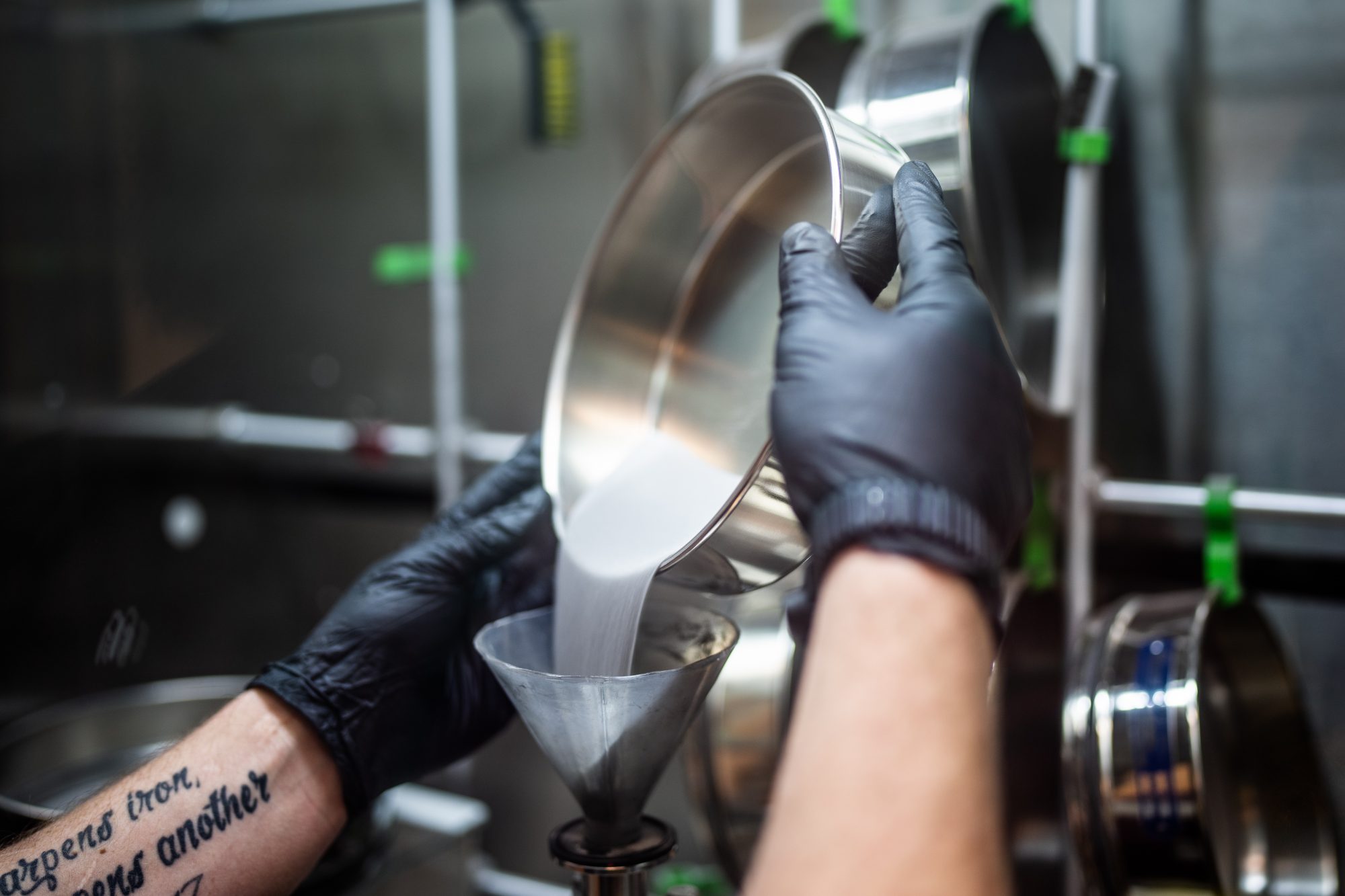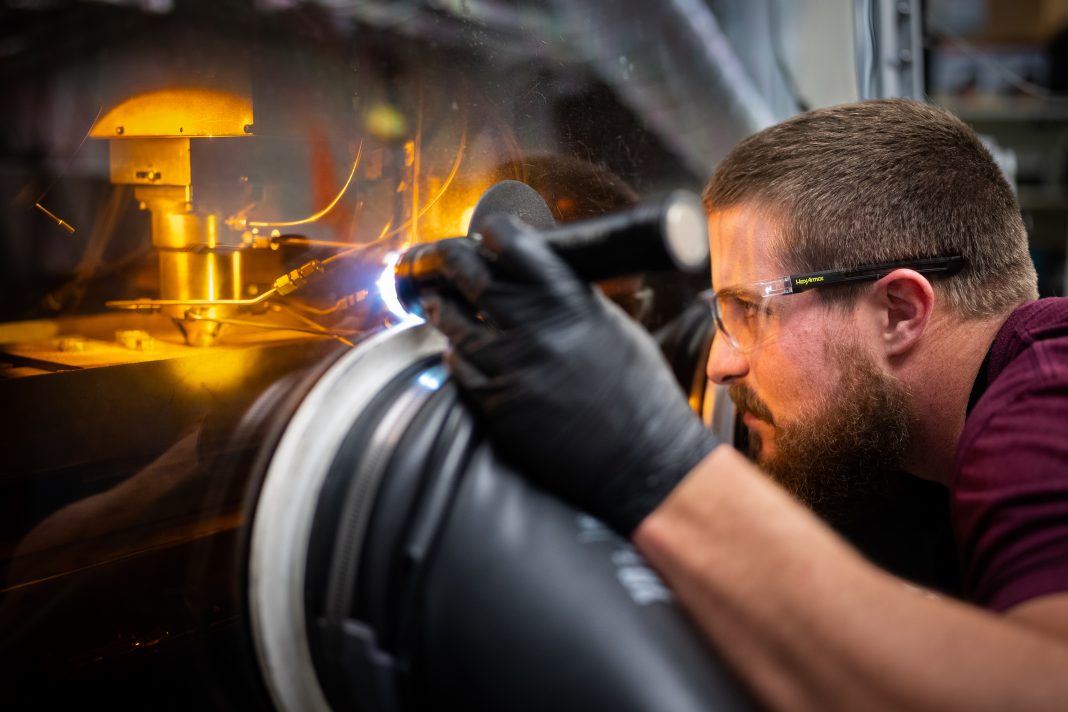Researchers discover 3D-printed superalloy with the ability to generate more electricity for power plants whilst cutting carbon emissions
Researchers from Sandia National Laboratories have demonstrated that a new 3D-printed superalloy could help power plants generate more electricity while producing less carbon.
It all began with a 3D printing machine
Sandia National Laboratories technologist Levi Van Bastian works to print material on the Laser Engineered Net Shaping machine. This special machine allows scientists to 3D print new superalloys, which, as the team has discovered, can have an incredible composition. This superalloy, for example, is stronger and lighter than state-of-the-art materials currently used in gas turbine machinery.
These findings are expected to broadly impact the energy sector and the aerospace and automotive industries. It suggests that a new class of similar alloys is just waiting to be discovered.
This material can access previously unobtainable combinations of high strength, low weight and high-temperature resiliency
“We’re showing that this material can access previously unobtainable combinations of high strength, low weight and high-temperature resiliency,” Sandia scientist Andrew Kustas explained. “We think part of the reason we achieved this is because of the additive manufacturing approach.”

‘A win-win for more economical energy and for the environment’
Considering that 80% of electricity in the U.S. comes from fossil fuel or nuclear power plants, the 3D-printed superalloy really could help in reducing carbon emissions.
Sandia’s experiments showed that the new superalloy — 42% aluminium, 25% titanium, 13% niobium, 8% zirconium, 8% molybdenum and 4% tantalum — was stronger at 800 degrees Celsius (1,472 degrees Fahrenheit) than many other high-performance alloys. This includes those alloys currently used in turbine parts. It is still stronger when brought back down to room temperature.
“This is therefore a win-win for more economical energy and for the environment,” Rodriguez said.
“Electronic structure theory led by Ames Lab was able to provide an understanding of the atomic origins of these useful properties, and we are now in the process of optimizing this new class of alloys to address manufacturing and scalability challenges,” Ames Lab scientist Nic Argibay Argibay said.
The future of 3D-printed superalloys
In the future, the team is interested in exploring advanced computer modeling techniques. They want to understand if these techniques could help researchers discover a new class of high-performance, additive manufacturing-forward superalloys.
“These are extremely complex mixtures,” said Sandia scientist Michael Chandross, an expert in atomic-scale computer modeling. “All these metals interact at the microscopic — even the atomic — level, and it’s those interactions that really determine how strong a metal is, how malleable it is, what its melting point will be and so forth. Our model takes a lot of the guesswork out of metallurgy because it can calculate all that and enable us to predict the performance of a new material before we fabricate it.”
“With all those caveats, if this is scalable and we can make a bulk part out of this, it’s a game changer,” Kustas concludes.











